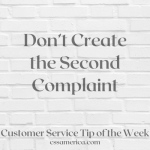For a hospital, is it about customer service or a hotel look and feel?
In the world of healthcare, hospitals have come a long way, with many looking like a mini-version of the Ritz-Carlton or the Taj Mahal, for that matter.
The look of the facility has become paramount to the great patient experience. Marble floors in the lobbies; hardwood floors in the patient rooms; flat screen TVs in the waiting rooms.
But a recent study by J.D. Power and Associates noted that “For upscale hotels, the facility accounts for nearly one-half (48 percent) of guests’ overall satisfaction, while in an inpatient setting the hospital facility represents just 19 percent of patients’ overall satisfaction.” So while the look and feel of the hospitals are tending more toward the luxury hotel experience, the reality is that patients want to feel like you are caring for them. And what drives that patient satisfaction feeling more than anything else? The employee.
For any given hospital, “Doctors and nurses account for 34 percent of the overall experience ratings for inpatients, and their influence is even higher (43 percent) among patients in emergency settings. Among outpatients, doctors and other healthcare professionals represent 50 percent of their overall experience.” So when you think about patient satisfaction, you have to think about the customer service skills of the employee. You have to think about the attitudes of those prospective employees you’re considering.
To create high levels of patient satisfaction at your hospital, you have to become proficient at defining, articulating, growing, and retaining those individuals with the types of customer service attitudes, skills, and knowledge needed to be successful.
A pretty hospital building is a wonderful thing. But a customer-focused employee is the true building block to high patient satisfaction.
Interested in improving your company’s customer service? See more at our new website! http://www.cssamerica.com/





















